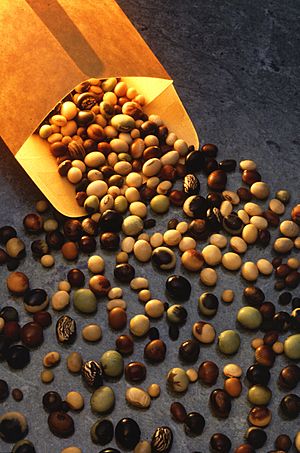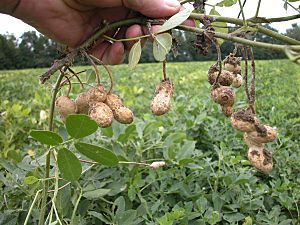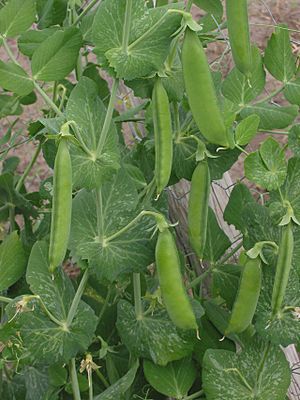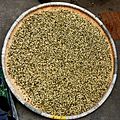Legume facts for kids

A legume is a special type of fruit that grows inside a pod. These fruits come from plants in the Fabaceae family. Think of common foods like peas and beans – they are all types of legumes!
Contents
What Legumes Have in Common
Legumes grow from a part of the plant called the carpel. This is the female part of a plant that makes seeds. The fruit of a legume is found inside a pod. This pod can usually split open on both sides when it's ripe.
However, not everything that grows in a pod is a legume. For example, some nuts grow in pods but are not legumes.
Legumes We Eat

Many legumes are grown for their seeds. These seeds are called "grain legumes" or "pulses." People and animals eat them, and sometimes their oils are used in factories.
Some common grain legumes include:
Why Legumes Are Good for You
Legumes are super healthy! They are packed with important nutrients.
They give you lots of protein, which helps your body grow strong. They also have dietary fiber, which is good for your digestion. Plus, they contain carbohydrates for energy and many dietary minerals.
For example, a small serving of cooked chickpeas has a lot of protein and fiber. It also gives you plenty of folate and manganese.
Legumes are like other plant foods because they have no cholesterol. They also have very little fat or salt.
They are also a great source of "resistant starch." This special starch is broken down by good bacteria in your large intestine. These bacteria turn it into energy that your body's cells can use.
Some studies suggest that eating legumes regularly can help keep your body healthy. They might help lower blood pressure and reduce bad LDL cholesterol. This is especially true if you follow a vegetarian diet.
Types of Pulses

The Food and Agriculture Organization (FAO) recognizes 11 main types of pulses. Pulses are the dried seeds of legumes.
Here are some examples:
- Dry beans: This group includes many popular beans like kidney beans, navy beans, pinto beans, lima beans, and adzuki beans.
- Dry broad beans: These are also known as fava beans.
- Dry peas: Like the garden peas you might eat.
- Chickpeas: Also called garbanzo beans.
- Dry cowpeas: You might know these as black-eyed peas.
- Pigeon peas: A common ingredient in many dishes.
- Lentils: Small, disc-shaped legumes often used in soups.
- Bambara groundnuts: Also known as earth peas.
- Vetches: Often used as animal feed.
- Lupins: Some types are eaten by people, others by animals.
- Minor pulses: This group includes less common ones like lablab beans and winged beans.
How Legumes Are Used Around the World
India buys the most legumes from other countries. This is partly because many people in India follow Hinduism, a religion that often encourages a meat-free diet. Legumes are a cheap and easy-to-find food source in India.
The top four countries that grow and sell legumes to others are:
The USA grows a lot of legumes for different uses. For example, soybeans are used to feed cattle and to make vegetable oil. Peanuts, which are also legumes, are a very popular snack in the USA.
Related pages
Images for kids
-
White clover, a plant often used as animal feed
-
Lupin flower garden
-
Root nodules on a Wisteria plant. These nodules help the plant get nitrogen from the air.
See also
 In Spanish: Legumbre para niños
In Spanish: Legumbre para niños








